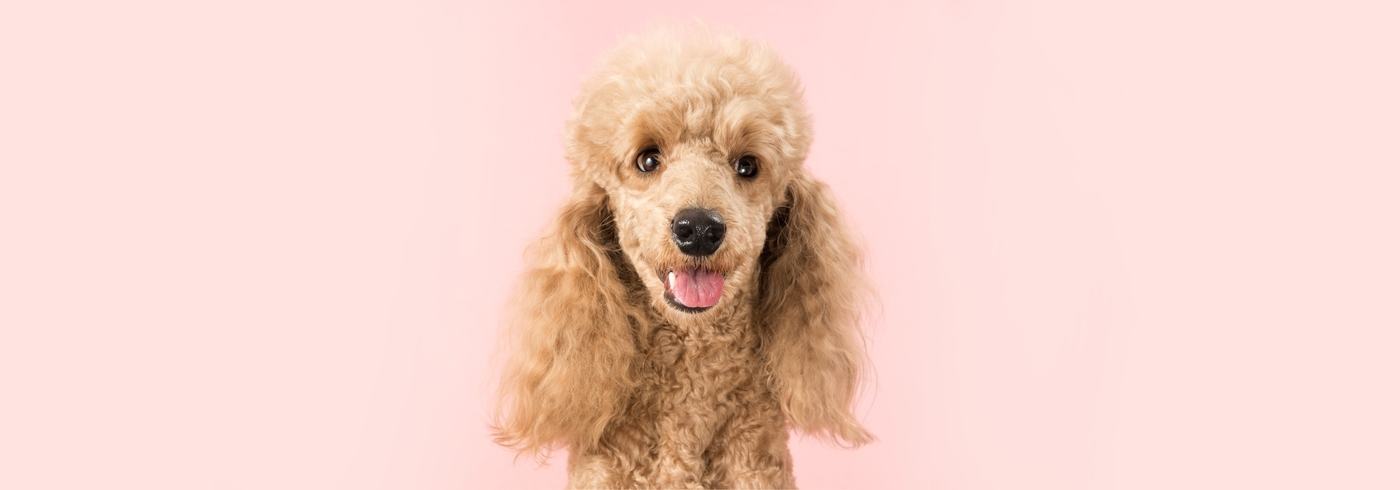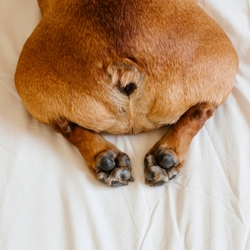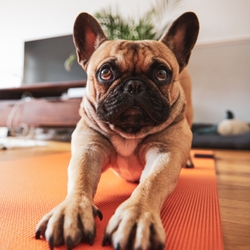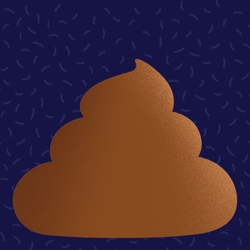
Dog Fur: The Ultimate Guide on Dog Coats and Hair (2022)
Finn is your expert source for all things doggo -- including their luscious locks. Read on for our 2022 guide on dog coat, fur, and hair.
Ever see an Afghan hound and think, “Gosh! That dog has more beautiful locks than I do!” Yeah, us, too.
We’re about to give you the rundown on all things dog fur, like the difference between fur and hair, how to keep your dog’s coat clean, the key to grooming, hypoallergenic breeds, excessive shedding, and a list of dogs with the most luscious locks.
Read on “fur” all the information you could possibly need about dog coats and hair.
Dog Fur vs. Dog Hair
So what’s the difference? Actually, not much.
On a biochemical level, fur and hair are pretty much the same things. They’re both made up of keratin, just like our skin and nails. And they both grow out of the same type of hair follicle.
The reason why people distinguish the two words is that fur and hair do have a few different characteristics like length, thickness, and the density at which it grows.
For one, the texture of pet fur is different from the texture of human hair. Fur is shorter and denser yet finer. Both labrador retrievers and Australian cattle dogs have fur rather than hair. A dog with fur might have a double coat, like the Pomeranian. Dog breeds with double coats have a longer and fluffier topcoat and a shorter and thicker undercoat.
Dog hair is long and has the potential to be wavy or curly. Dander, dust, and dead hairs are more likely to get caught in the coat of a dog that has hair, especially hair with a curly texture.
The Growth Cycle of Fur and Hair
Both fur and hair have the same growth cycle, although the rate at which they each grow and their length is different. Here are the four growth phases of both fur and hair.
- Anagen: The phase in which the fur/hair is actively growing.
- Catagen: The phase in which the fur/hair is fully grown.
- Telogen: The resting phase. At this point, your dog’s fur/hair is fully grown, attached to your dog, but dormant.
- Exogen: The phase in which the fur/hair begins to fall out, also known as the shedding phase.
Dogs with hair need professional grooming (unless you trust yourself with a pair of scissors), as the anagen phase lasts for a longer period of time. In fact, the hair will continue to grow and grow until it is cut. Because this prolongs the entire hair growth cycle, dogs with hair shed less frequently. However, they require more frequent grooming so that their hair doesn't get too long.
What’s a Hypoallergenic Dog?
Humans who are allergic to dogs typically react to the dander in their coat and certain proteins in their saliva. Allergy sufferers will generally experience itchy eyes and skin, as well as a scratchy throat.
Factually, there are no dog breeds that are 100 percent hypoallergenic. Let’s start there. Hypoallergenic breeds are dogs that are more compatible with people who happen to be allergic to canines.
In other words, people who are allergic to dogs, in general, are less likely to experience a reaction when they come in contact with a hypoallergenic breed.
In addition to investing in a hypoallergenic breed, the best way to keep your allergies at bay is through consistent brushing and bathing, and maybe an air purifier!
Here are ten hypoallergenic dog breeds:
- Afghan Hound
- Bichon Frise
- Irish Water Spaniel
- Maltese
- Poodle
- Portuguese Water Dog
- Yorkshire Terrier
- Affenpinscher
- Chinese Crested
- Havanese
How To Keep Your Dog’s Coat Healthy at Home
Your dog’s coat health is important to their overall health and well-being. Here are some ways to keep your furry friend’s coat looking sharp at home without going to a professional groomer.
Brushing
Brushing is a vital part of coat health. The type of brush you use will depend on your dog’s breed and what coat they have.
A slicker brush is good for dogs with medium to long fur and is effective if you want to detangle knots. It’s also a great brush for those dogs with double coats. Because of the wire ridges, make sure you are gentle with your pet when using a slicker brush. They can be kind of harsh if you push down too hard, so don’t use too much pressure.
A pin brush is less harsh than a slicker brush, and they are suitable for non-shedding dogs as well as dogs with curls. They have wide-spaced bristles with tiny rubber pins on their ends. Pin brushes look similar to the types of brushes that we use on our own hair.
A bristle brush is good for a wide range of coats and is effective if you want to remove debris and dirt. It’s a good brush for distributing natural oils and to create shine, all while getting rid of that pesky dust.
A dog comb is a good option as a finishing brush once you’ve used one of the brushes above. They, too, are great for detangling knots and areas near the ears, eyes, and snout.
Bathing
How often you bathe your dog depends on coat type, health conditions, and lifestyle.
Does your canine companion have long locks? Short fur? Constantly play outside in the mud? Love the water? Have sensitive skin that’s easily irritated? All of these things matter when figuring out how frequently you should bathe your companion. It really depends on how well you want to maintain your pup’s coat and what their lifestyle is like.
- Hairless breeds, such as the Chinese Crested and the Xoloitzcuintli, require weekly baths, since their skin is exposed and needs to be cleaned more often.
- For long-coated breeds, they could need a bath every week, every other week, or once a month.
- Dogs breeds that fall right in the middle, like the golden retriever and the Siberian husky, generally need fewer baths.
Overbathing could irritate the skin and strip it of its natural oils, so pay attention to how your pup’s skin and coat react after you bathe them. Make sure you’re using pup-specific shampoo, too!
Supplements
For maintaining a healthy canine coat, consider a supplement specifically formulated to make your pup shine.
Finn’s Skin & Coat supplement supports healthy skin, strong, hydrated hair, a shiny coat, and shedding support thanks to ingredients like omega-3s, wild Alaskan fish oil, vitamin E, and biotin. These skin and coat-healthy nutrients work hard at the cellular level to support your pup’s skin and coat from the inside out.
Talk to your vet if you have questions about your pup taking supplements, especially if you are unsure how much they should take based on their age, size, and breed. We do include this info directly on our packaging, and you can always take our Virtual Vet Consultation for a little more guidance on what supplement (or supplements) is best for your pup!
Nutrition
A healthy and hearty nutritional diet is also an important part of your dog’s coat health. Just like the supplement above, make sure your dog’s food incorporates proteins, fats, vitamins, and minerals as they are essential to dogs’ skin and coat health.
Your canine companion’s diet must contain a fair amount of protein, as it’s a protein that makes up the majority of your dog’s coat. If you’re not providing enough protein, their hair could fall out or become weak.
Grooming
Here are the benefits of consistent professional grooming. Note that short-coated dogs need less (if any) professional grooming than long-coated dogs.
Detection and Prevention
A professional pet groomer will be able to detect things like ticks, fleas, parasites, improper hair loss, and dry skin. Lumps, lesions, and rashes are more likely to be caught by a professional groomer than while you’re brushing your dog at home. Professional grooming is just another part of preventative care that keeps your dog’s overall health in check.
Encouraging Good Boy (or Girl) Behavior
While your dog might hate the process of professional grooming, desensitizing them to situations they don’t typically love is good for their mental health and a great way to manage their behavior.
They Do It All
Not only do professional groomers keep your dog’s long coat happy and healthy, but they’ll incorporate other services into the session that are also necessary for maintenance.
Your groomer will likely cut your dog’s nails, bathe them, clean their ears and check for infections, and some even brush your dog’s teeth. You’re feeding five birds with one scone. It’s worth the investment, and your dog will walk out feeling fine.
How To Prevent Ticks, Mites, and Fleas
Professional grooming, for one. But we’ve already touched on that.
A chewable preventative is the best way to keep those little rascals out of your dog’s fur. These chewables are usually administered once per month depending on the formula, but check the labeling to make sure. You can get these from your vet, and a lot of pet stores also carry them.
Remember to bathe your doggo thoroughly, especially after an outdoor escapade. Parasites are always lurking.
Can You Dye Your Dog’s Fur?
Absolutely! As long as you are using safe-for-pup products, it’s completely fine. Make sure you discuss the coat dye you plan on using with your vet before lathering them up.
Never use human hair dye, as it can be extremely toxic and irritating to your dog’s skin. Even with safe-for-dog products, keep it away from their eyes, ears, and mouths. The products shouldn’t be ingested in any way, shape, or form.
If you’re unsure about the safety of dying your pet’s fur, or you don’t think you’re fully capable, have a professional help you out.
Excessive Shedding
Excessive shedding could be a sign of an underlying illness or another medical issue. If your dog starts to shed more than normal, get your vet on the phone.
In the meantime, check out the skin below their coat. Is it discolored? Red? Flakey? Are they itching more than normal? Do you notice any dandruff?
There are a couple of reasons why your dog might be shedding excessively. A poor diet, stress, and anxiety, using the wrong shampoo, skin parasites, and hormonal imbalance can all lead to an uncontrolled loss of fur.
Dog Breeds With the Most Luscious Coats
So we did it. We went there. We compiled a list of the top 10 dog breeds with the most luscious coats. And we’re without a doubt starting with the Afghan Hound.
1. Afghan Hound
Have you seen an Afghan hound in person?! These regal and elegant creatures have better locks than most humans. Fun fact, their silky coat was originally meant to protect them from the harsh South Asian climate. At first glance, these magnificent dogs seem like they could be part of the royal family.
2. Bergamasco Sheepdog (aka Bergamese Shepherd)
These stunning doggos have the most unique coats out there. Their hair is made up of multiple textures. These different textures form flocks (loose mats) that cover their entire body and legs. Almost like a mop! Bergamascos are truly one of a kind.
3. Irish Setter
The Irish setter has a gorgeous maroon coat that can be spotted from a mile away. These sweet-natured lovers are of the most beautiful out there. Their coats are red and shiny and technically come in two colors, either chestnut or mahogany.
4. Bearded Collie
The Bearded Collie is the shaggiest of double-coated dog breeds. They come in the lovely colors of gray and white. Because of their shaggy coats, these dogs require daily brushing of at least 10 minutes per day. It’s the only way to keep it fluffy and fresh!
5. Cavalier King Charles Spaniel
These adaptable dogs have amazingly luscious coats with the cutest of markings. The Cavalier King Charles spaniel comes in four different colors; black and tan, black and white, Blenheim, and ruby. In addition to their beautiful coats, these pups have very distinct features similar to their springer spaniel and cocker spaniel relatives (also known for their luscious coats).
6. Golden Retriever
We couldn’t not include the golden retriever on this list. The golden retriever is one of the most popular breeds globally, and their bright gold coat that gives the breed their name is one of beauty. Goldens are just as fun to pet as they are to play with.
7. Briard
The Briard is a unique-looking dog breed originating in France. Their shaggy coat comes in gray, tawny, and black. It’s topped off with a peek-a-boo hairdo parted that’s naturally in the middle. Try not to fall in love with the look of a Briard; we dare you.
8. Maltese
We can’t even handle the little white coat of a Maltese. And the ones with little bows on their heads? Too cute for words. Maltese have a white floor-length coat that needs daily brushing. This charming breed is actually known for that iconic white hair. It’s playful, show-stopping, and thick enough to be braided.
9. The Standard Poodle
Curls for days! The Standard poodle has a stunning curly Q coat that’s hard not to stare at. This incredibly smart breed comes in black, white, and apricot. People tend to believe that poodles are low-allergen dogs, which means they are great for families looking to add a hypoallergenic friend to their clan.
10. Yorkshire Terrier
The Yorkshire terrier can pull off the most iconic updos. These sprightly pups are known for their glossy floor-length coat, typically steel blue and golden tan colored. Yorkies are also hypoallergenic, so while not 100 percent allergen-free, good for people that negatively react to dander, dust, and dog saliva.
Conclusion
There’s a lot to touch on when it comes to dog coats, fur, and hair.
While fur and hair are the same on a chemical level, they each have different characteristics. Their growth cycles are the same; however, it takes longer for hair to fall off a dog’s body, whereas fur comes off much quicker.
There are a few ways to keep your dog’s coat healthy at home. Frequent brushing, bathing, effective supplements, and a healthy diet are the tricks to keeping your dog’s locks luscious.
When all else fails, hire a professional groomer to help you out. Not only will they make your dog’s coat look perfectly perfect, but they’ll usually clip your dog’s nails, brush their teeth, clean their ears, and make sure there are no infections on the skin.
To prevent ticks and fleas, invest in a monthly chewable in addition to frequent brushing and bathing. If you notice that your dog is excessively shedding out of the blue, consult a vet. It could be a sign of an underlying medical issue.
And lastly, if you want to get funky with it, you can dye your pup’s fur with a safe-for-dog product that’ll give your doggo some spunk! Always consult your vet before dying your dog’s coat.
Sources:
Hypoallergenic Dogs | American Kennel Club




Comments: